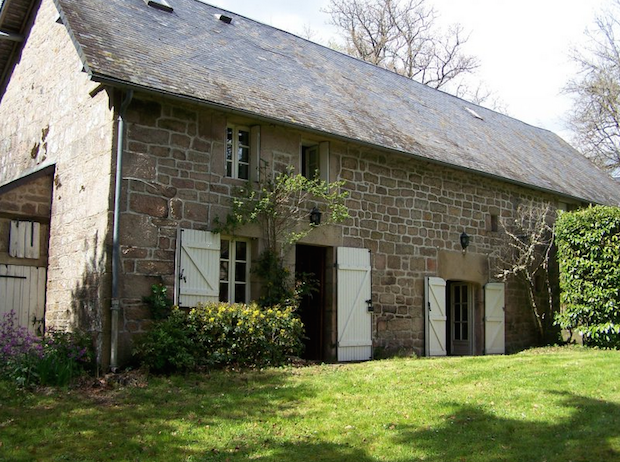Often I get asked the question "what is the lowest price the vendor will accept"? and of course there is never an answer for this, would YOU tell your agent or prospective buyer the lowest figure you would accept when selling your house? OF COURSE NOT!
We probably do not highlight properties that often where we know the vendors are "open to offers" so thought I would share this one with you today!
For sale at 188,680 euros FAI (agency fees included) we have this delightful stone built Longere with attached barn for further development in the Limousin region and yes the owner is "open to offers"...
Situated in a small peaceful hamlet, with a nice view over stunning countryside is this beautiful 1860's granite stone 3 bedroom Longere style house and attached barn. There are some good character features in this original building, habitable now but with so much scope for improvement and development, perhaps even some guest accommodation to provide income in the form of Guest Gite rentals in the future.

CXZ00735 - The vendor is open to reasonable offers.
GROUND FLOOR: Entering the house you are immediately greeted by a 32m2 living room with grand feature fireplace and lots of character stone and beams.
Leading from the living room is a 40m2 kitchen and dining room with wooden fitted kitchen with stone features cleverly integrated into the cabinets. There are beautiful french doors leading into the gardens for easy outdoor dining. Next to the kitchen is another room of 40m2 which could be made into anything you require. Maybe another bedroom, living room or very large utility room.
UPSTAIRS: Leading upstairs via a beautiful wooden staircase situated in the living room, there is a 35m2 master bedroom with a beautiful corner bathroom and separate toilet. The bathroom suite in this room is really something special with a quality and unusual bath and matching double sink basins.
Along the landing is another bedroom of 10m2 and a family bathroom with bath, sink and multi-jet shower. There is also a separate toilet.
Another staircase takes you up to another bedroom on a mezzanine measuring 25m2. Most of the upstairs has the original wood floor.
This lovely house has double glazed windows throughout and excellent quality wooden shutters keeping in character with the style of the property. There is electric heating throughout.
OUTBUILDING: Attached to the house is a 50m2 barn with single door to the front and double doors to the rear. There is sufficient land at the rear of the property to drive in vehicles if the barn was to be used to house cars or other vehicles. This barn could easily be converted into additional accommodation or separate attached cottage.
OUTSIDE: to the left of the house is an attached stone out-house with 2 rooms, one currently housing wood for the fire and the other gardening equipment.
This house sits within 2650m2 of exquisite gardens with beautiful trees and well-tended lawns.
This property is situated in a hamlet 2km from the town of Peyrelevade, which has all amenities such as shops, doctors, pharmacy and school, to name just a few. For leisure there are lakes, walking and cycling routes, a golf course, horse riding nearby and the ski slopes of Mont Dore just 1 hour away.
This house offers you the 1860's character french features built in local granite stone and situated in a stunning area of rural France. A real french dream!
The department of Corrèze is located in south central France, Corrèze belongs to the Limousin region. Correze is the name river running through the department. The population is around 240,000 inhabitants and is split into three arrondissements (Tulle, Brive and Ussel), 38 cantons and 285 towns and villages. Lanscapes in this department are mountains, plateaus and valleys. The highest mountain is the Mont Bessou at 978m.
Correze has many pretty villages or towns. It has six villages belonging to the ’Prettiest villages of France’ category, so watch out for Collonges-la-Rouge, Curemonte, Saint-Robert, Ségur-le-Chateau, Treignac and Turenne.
Limousin is often described as one of the cheapest French regions in terms of property. It will depend of course on the location and your personal expectations but in general you get a lot for your money.
Less than 12% of the properties in Correze are second homes but the number is climbing as it is really sought after for quality holiday homes and setting up a B&B style business.
Blog submitted by: David at The French Property Network - Cle France.